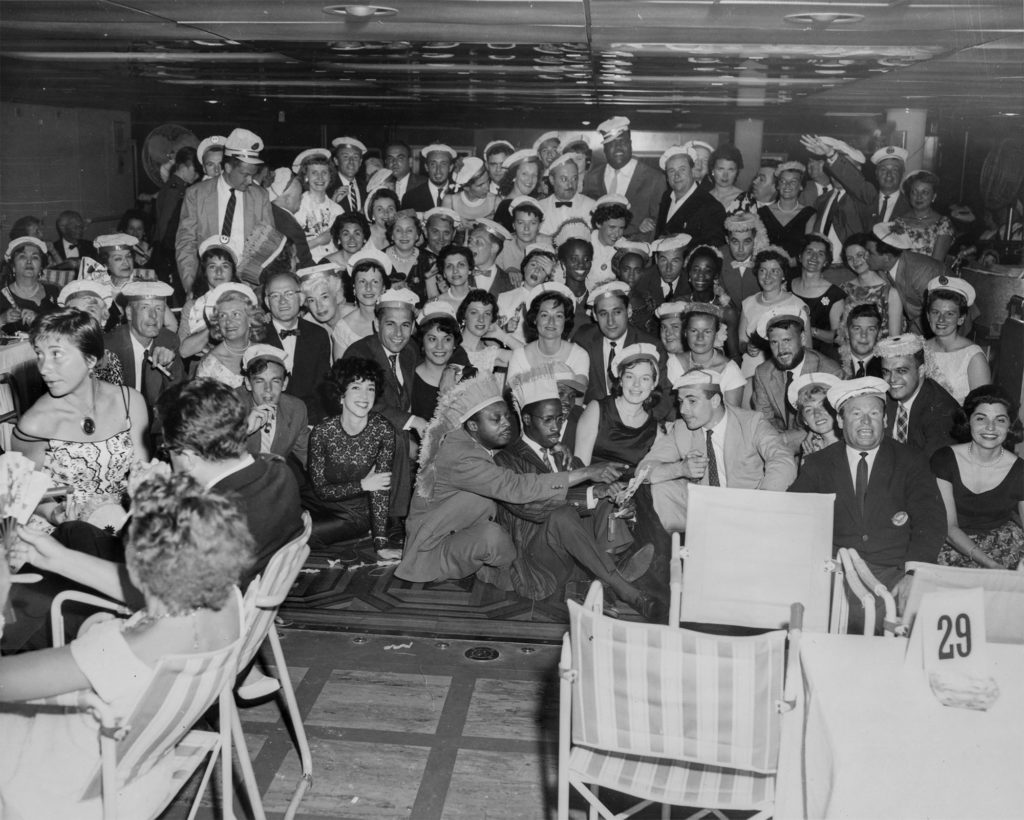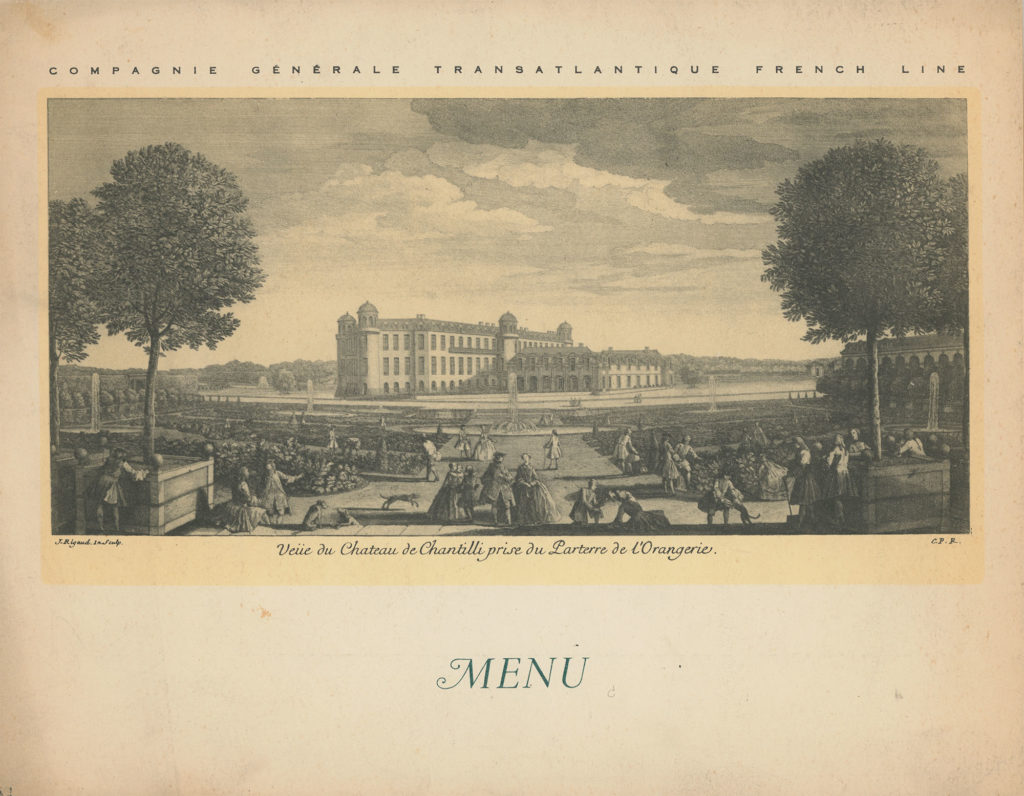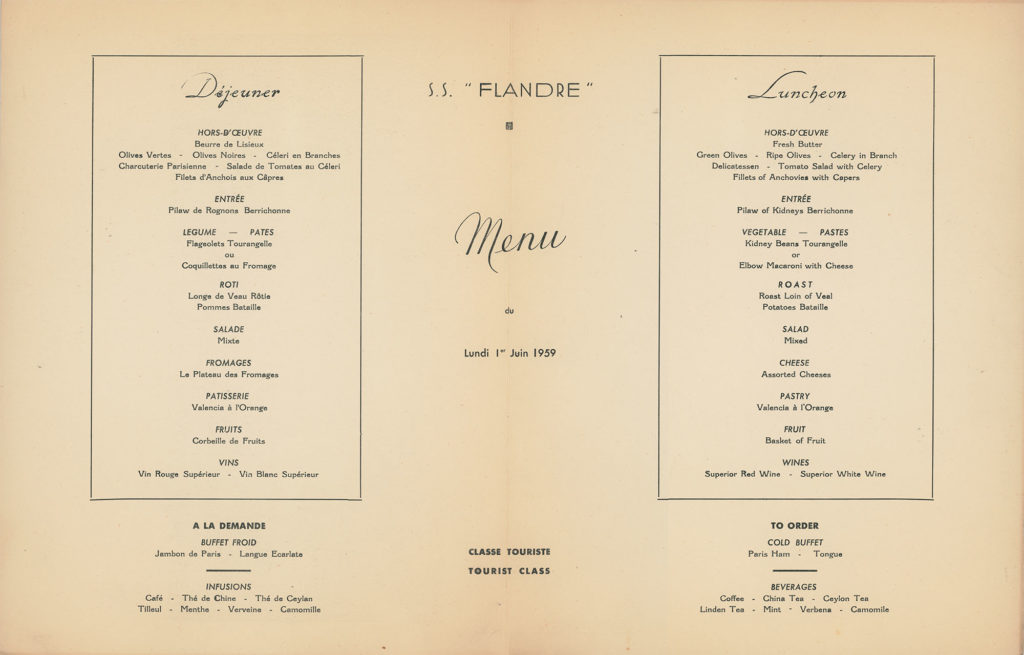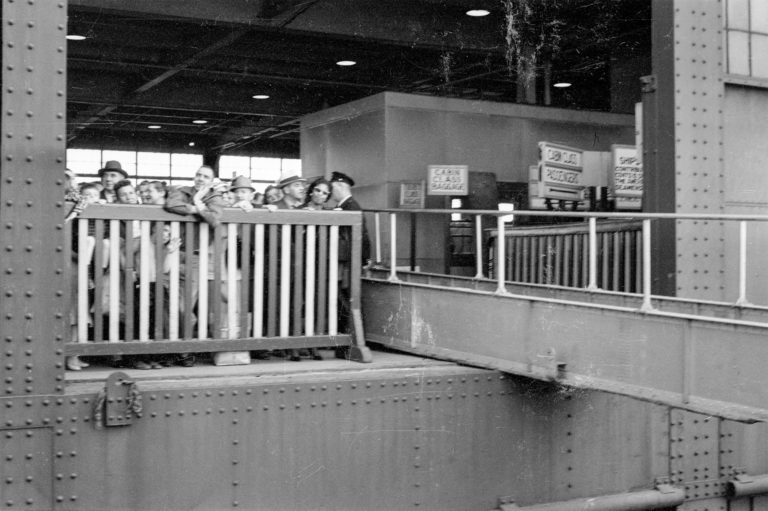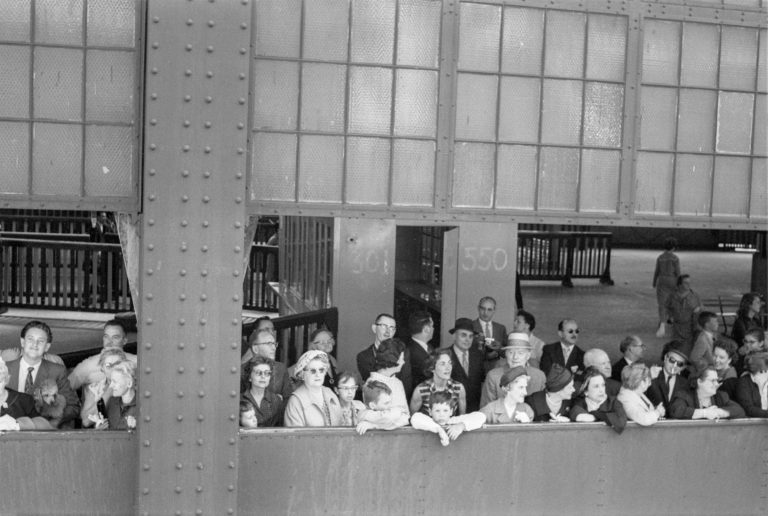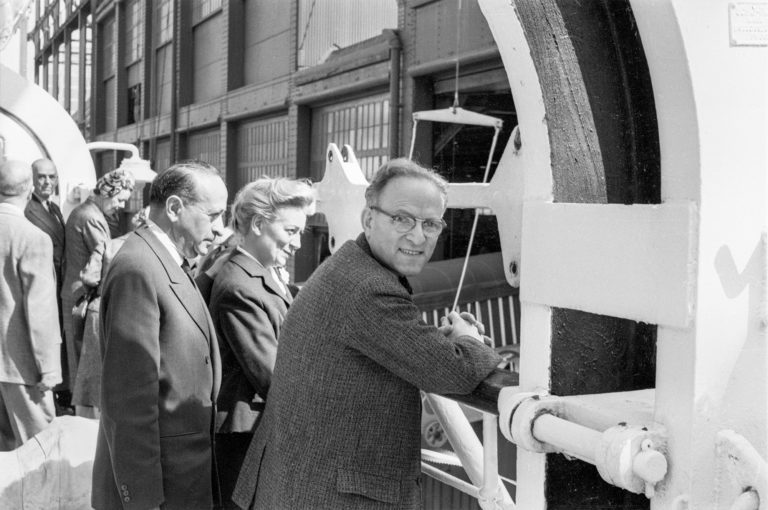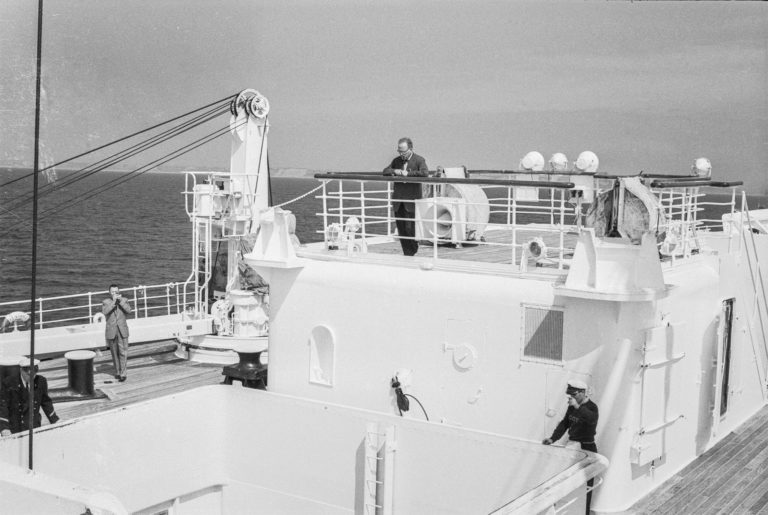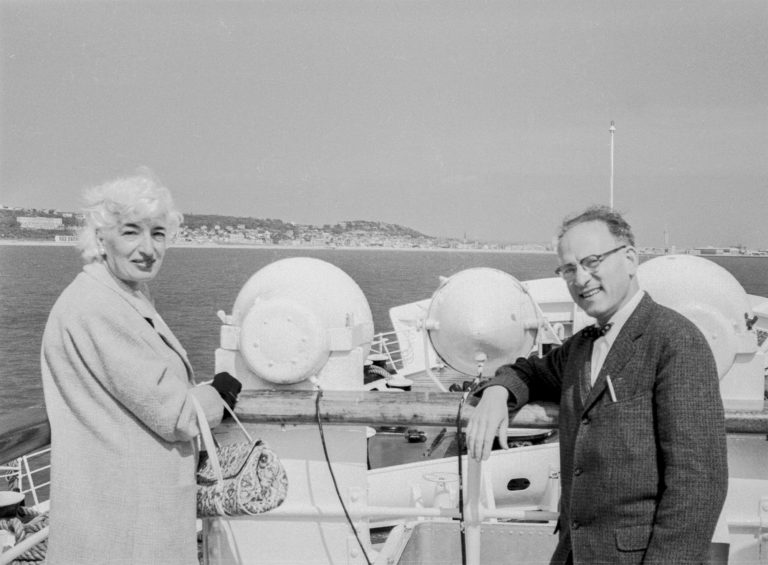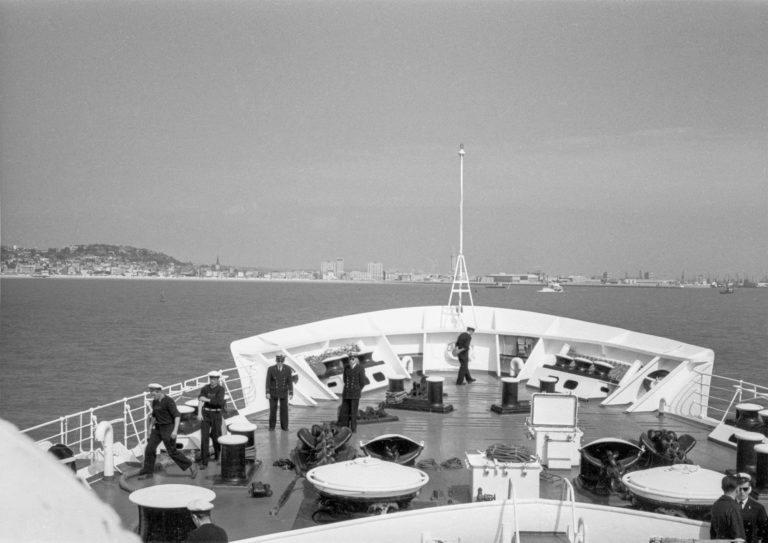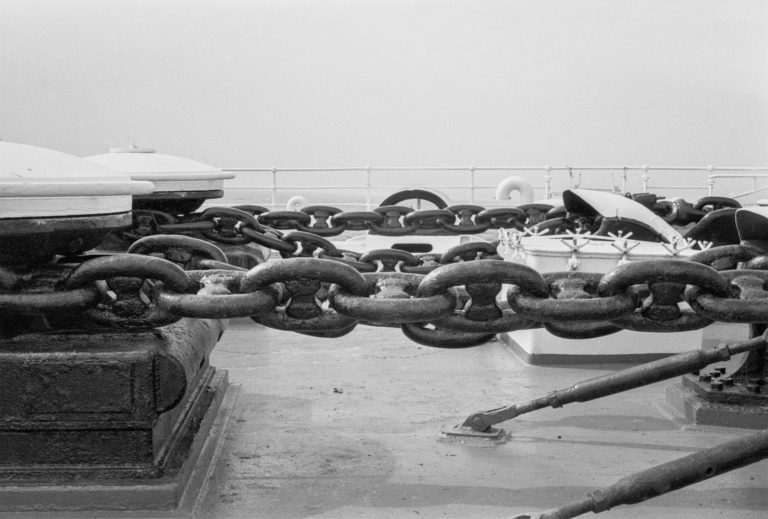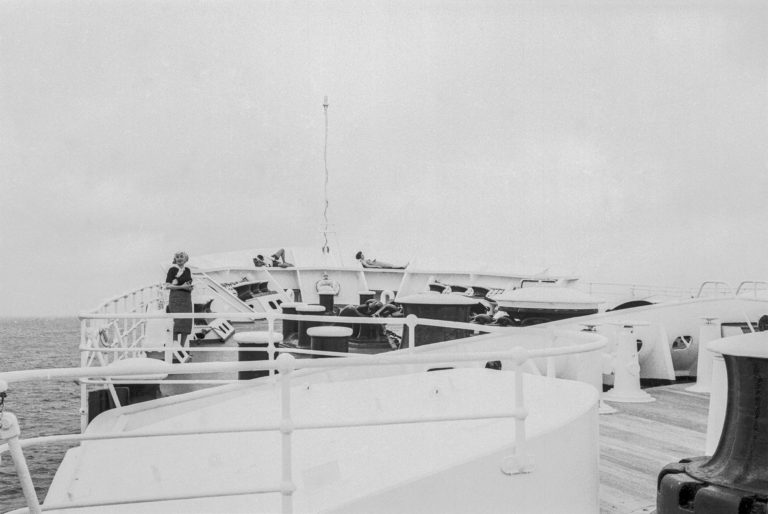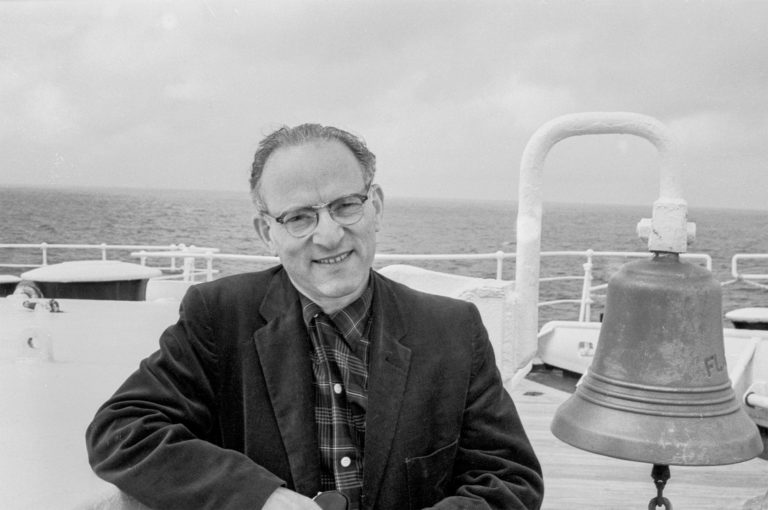S.S. Flandre, 1952–1994, ocean liner on the French Line, used for North Atlantic and Caribbean service, until sold to the Costa Armatori Line in 1968. Cruised the Caribbean under the names Carla C, Princess Carla (while leased to Princess Cruises) and Carla Costa, and was inspiration for the TV series, The Love Boat. Transferred in 1992 to Epirotiki Line and renamed Pallas Athena, mainly for week-long cruises on the Aegean Sea. Irreparably burned in a dockside fire in 1994.
Despite a very inauspicious debut voyage—the Flandre had so many problems that dockworkers nicknamed it ‘the Flounder’1Othfors, Daniel, Flandre (II): 1952-1994. Also known as Carla C, Carla Costa, and Pallas Athena, The Great ocean Liners, updated April 11, 2018, accessed July 4, 2023.—this French Line flagship had a long distinguished career, earning the affection of generations of crew and passengers. Built at a cost of $20 million and launched on October 31, 1951, the 20,469-gross-ton-vessel was relatively small and swift. It could travel at a speed of 23 knots and reach Le Havre from New York in six days, including a stop in Great Britain on the sixth day. Interiors were splendidly outfitted, especially in first class. Ads compared the ship to “a veritable chateau-on-the-sea” and the voyage to “6 extra days ‘in France’” with prices in 1959 ranging from $337 (First Class) to $200 (Tourist). All passengers enjoyed superb French cooking, French wine, orchestra for dancing and concerts, sports, accommodations for children, and the proverbial much more.2French Line advertisement, Boston Globe, May 4, 1959, p. 26.
Hortense Mendel and Ismar David boarded the S.S. Flandre on May 25, 1959. It would be their first and only trip together outside the United States. Until then, vacations usually meant summer holidays in Rockport, Massachusetts, although in 1955, they went to Aspen for the International Design Conference and from there to the Pacific Coast. That Ismar’s naturalization papers were issued in 1956 perhaps explains why they had traveled only domestically in the early years of their marriage. (Hortense had been to Europe several times and to the Carribbean and South America, since applying for her first passport in 1925.) The Flandre landed first at Plymouth and then at Le Havre, two days before the couple’s sixth wedding anniversary. After lunching on roast loin of veal and potatoes Bataille, they debarked in Le Havre to begin a nearly two-month trip that included visits to France, Israel, Germany, The Netherlands and Great Britain.


























